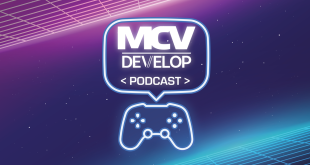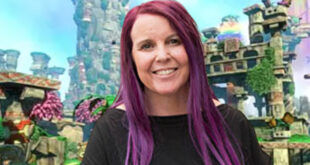Since 2012 we have been spoilt with a near-constant stream of indie titles coming to digital store fronts.
Each and every week, a plethora of smaller projects come to Steam, PSN, Xbox Live and Nintendo’s eShop. They’re even on Xbox and PlayStation’s stages at the likes of E3 and Gamescom alongside the triple-A blockbusters. Simply put, indie titles are a huge part of today’s games market.
Not that you’d know this by looking at how much these products cost to buy. Speaking in very general terms (and there are of course exceptions), most indie games will set consumers back around 10 – a tiny figure compared to their triple-A brethren.
As an industry, in some sections, we are undervaluing indie games,” says Team17 MD Debbie Bestwick. We all need to work at this, there’s a big gap between pillar indie games – with a sales potential of over 500,000 units – and the rest.
The bigger challenge is changing the consumer perception of just what indie means. It doesn’t mean cheap and low quality, but instead more creative freedom and agile approach to both business models and consumers.”
Rising Star’s Martin Mathers adds: For the most part, yes, we should be charging more for indie games. But there is a difference between ‘indie’ games and larger projects. The whole thing comes down to entitlement. That’s why a lot of games can’t be priced at over 15 – it is a buyer’s market, especially on PC. Users will sit there saying: ‘No, you entertain me. I deserve this, I’m entitled to this’. My response to that mentality is: ‘No, you’re not’.”
But Curve publishing director Simon Byron says that this lower price point helps indie games compete with triple-A rivals.
The indie sector has to work harder to push itself up ahead of gamers buying anything else. Price can be one of the best ways to do that,” he explains. But publishers aren’t undervaluing indie games. We are picking the price points that we know work for the types of games that we are publishing.”
TinyBuild CEO Alex Nichiporchik adds: We shouldn’t charge more. Anyone can make an indie game and it’s a very busy scene. By pricing your game a little bit lower and – making it more accessible – you actually get more of a chance of gaining a lot exposure. The market for indie games is huge, millions of people play indie games.”
"We can only charge more for indie games if we do it as a collective, otherwise those pricing their stuff higher will suffer."
Martin Mathers, Rising Star Games
But some indie games have rejected this low pricing trend. The likes of Jonathan Blow’s The Witness, Campo Santo’s Firewatch and No Man’s Sky from Hello Games come with higher price tags (30, 15 and 50 respectively) – price tags met with negative reaction when they were announced.
These are clearly exceptional projects – The Witness cost near $6m and took seven years to make, while No Man’s Sky has the backing of Sony and is set in a near-infinite universe (and whether it’s really an ‘indie’ game is up for debate).
Yet they speak to a trend in the indie space, of rising production values and game budgets in order to satisfy gamer demands. Thus, prices should also increase to recoup these growing costs.
But with consumers crying robbery at indie games priced at over 10, is it too late to start charging more?
Absolutely not. You should charge what the game is worth,” Team17’s Bestwick says.
We have small games and large games on our label. Each is priced to reflect what is best after lots of research and planning.
This is a perception issue that we need to address. We have to educate our audience on what to expect and what is an indie game: a complete dynamic ecosystem with less commercial barriers and more creative freedom that allow us to experiment new ideas and bring back old ones, with a really agile development model.”
Curve’s Byron adds: It’s not too late. Indie pricing was set originally to set them apart from triple-A products. They clearly still require a lot of time, money and effort to make, but they are no Call of Duty and are priced appropriately.
What we are seeing now from the indie sector is that production values are rising and the cost of making games is shooting up. That’s where you’re seeing the SRP go up. Firewatch sold 500,000 copies in its first month, making its development costs back on the first day, which is brilliant. But it was a huge risk that those guys took. They were a small team but one that needed money. The tech they were using costs money, all of it does.”
(Above, left to right):TinyBuild’s Nichiporchik, Team17’s Bestwick,Rising Star’s Mathers andCurve’s Byron
Rising Star’s Mathers believes that there needs to be solidarity in pricing with indie publishers.
We can only charge more if we do it as a collective,” he explains. The whole industry needs to do something about this. Otherwise, the only thing that’s going to happen is that the people that do price their stuff slightly higher will suffer because the games won’t sell. That would be a pity. On the other end of the spectrum, you have EA asking for over 100 for a special edition of Battlefront, which has virtually no content in the first place.
There has to be a tapering at both ends, so to speak.”
One of the big concerns with pricing games is the sale mentality.
On digital storefronts, consumers are well aware that there is going to be heavy discounting on products, so there’s less incentive to buy a game at launch. On Steam, these price reductions are particularly deep thanks to the regular – and infamous – Steam Sales
PC is ruined because Valve has ingratiated everyone with this idea that there are going to be two, probably more, sales a year,” Rising Star’s Martin Mathers explains.
A game comes out and just sits on 15,000 wishlists.”
But Curve’s publishing director Simon Byron says that there’s a way of tackling this mentality: Indie games are often released with a launch discount. Over time that price cut has varied and it’s getting bigger. 10 per cent used to be normal, now people are moving towards 20 per cent.
What that’s doing is saying: ‘hey guys, if you get it now, not only do you get a great game but you also get it at a price that’s cheaper than it will be in two weeks. The indie sector has to work harder to push itself up ahead of gamers buying anything else and price can be one of the best ways of doing that.”
He continues: In most cases, wishlist numbers will out

 MCV/DEVELOP News, events, research and jobs from the games industry
MCV/DEVELOP News, events, research and jobs from the games industry



